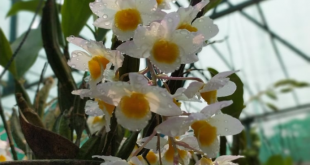Flagella Most prokaryotes are motile by swimming, and this function is typically due to a structure called the flagellum. The plural form of this word is flagella which means whip. Bacterial flagellum is a threadlike locomotor appendages extending outgrowth from the plasma membrane and cell wall. Bacterial flagella are thin, …
Read More »Bacteria: Introduction and Size
Get Free Netflix Now Best safe and secure cloud storage with password protection GPL Themes For Free Get Envato Elements, Prime Video, Hotstar and Netflix For Free Best Money Earning Website 100$ Day Best ever Chat Forum #1 Top ranking article submission website In 1675, on June 9, 10, 11 …
Read More »Theory of Abiogenesis and Biogenesis
The Debate over Spontaneous Generation after Van Leeuwenhoek discovered the previously “invisible” world of microorganisms, the scientific community of the time became interested in the origins of these tiny living things. Until the second half of the nineteenth century, many scientists and philosophers believed that some forms of life could …
Read More »Monocotylidonous Family: Liliaceae
Systematic position According to Bentham and Hooker it is placed under the series Coronaricae. Engler places it under the order Liliflorae. Hutchinson places it under the order Liliales of the division Corolliferae. Distribution The members of the family are cosmopolitan and specially abundant in the warmer parts of the tropical …
Read More »Dicotyledonous Family: Lamiaceae
Systematic position Bentham and Hooker placed it in the sub-class Gamopetalae, the series Bicarpellate and Cohort Gentianales. According to Engler, it belongs to the sub-class Metachlamydeae, the sub-order Tubiflorae, the sub-order Verbenineae. Hutchinson places it under the order Lamiales belonging to the phylum Herbaceae. Distribution The family contains about 200 …
Read More »Dicotylidonous Family: Apocynaceae
Systematic position Bentham and Hooker placed it in the sub-class Gamopetalae,the series Bicarpellate and Cohort Gentianales . According to Engler it belongs to the sub-class Metachlymadeae, the sub-order Gentianineae under the order Controtae.Hutchinson places it under the order Apocynales of the Phylum Lignosae. Distribution The family contains about 300 genera …
Read More »Monocotylidonous Family: Orchidaceae
Systematic position According to Bentham and Hooker it belongs to the series Microspermae. Engler places it under the order Microspermae.Hutchinson considers it as belonging to the order Orchidales of the divison Corolliferae. Distribution The family is large and is consisting of over 400 genera and more than 10,ooo species distributed …
Read More »Monocotylidonous Family: Poaceae
Systematic position Bentham and Hooker places this family under the series Glumaceae of the Monocotyledons. According to the Engler it belongs to the order Glumiflorae. Hutchinson places it under the order Graminales belonging to the division Glumiflorae. Distribution The members of this family is cosmopolitan and grow on almost all …
Read More » Plantlet The Blogging Platform of Department of Botany, University of Dhaka
Plantlet The Blogging Platform of Department of Botany, University of Dhaka






